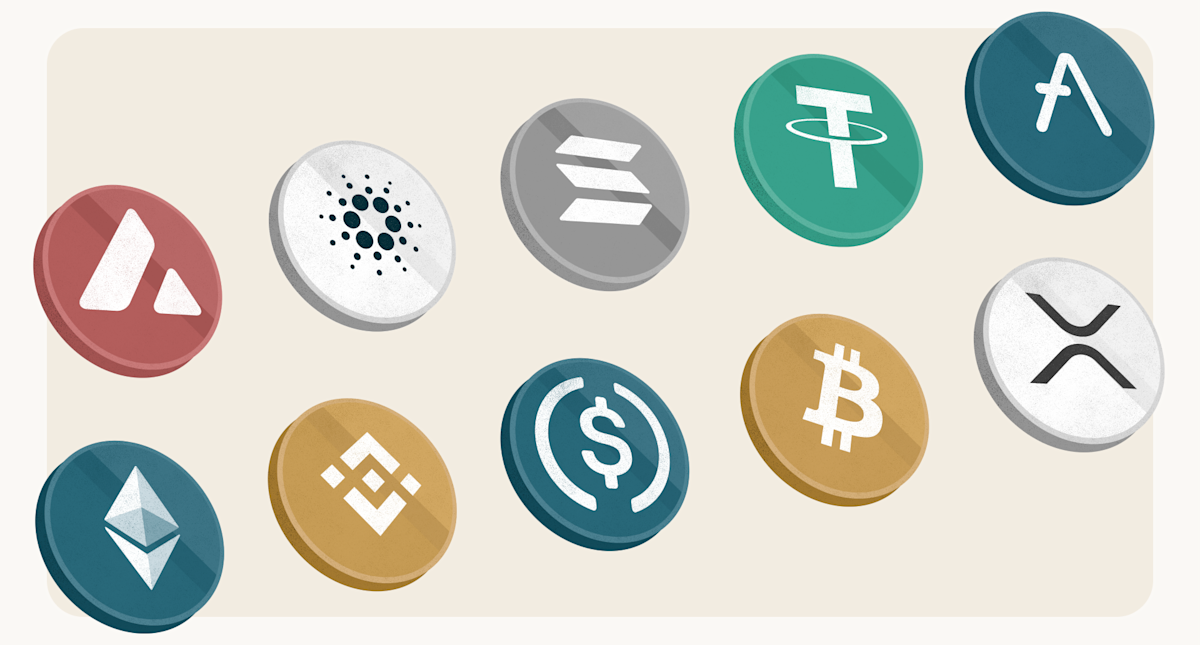Cryptocurrency cap
After reading this guide, you should be much more familiar with the most popular cryptocurrencies when it comes to both trading (on exchanges such as Kraken, Coinbase, or Binance) and technology, and the different types of cryptocurrency that exist. https://servicioamerica.com/ You know how they are different from one another, and you understand some of the pros and cons of each.
bitcoin (BTC) might be losing it’s chokehold on the cryptocurrency market, with the percentage of crypto owners who said BTC was their first coin falling year over year, with 54% saying saying BTC was their first coin in October 2023 compared to 58% in October 2022.
Central Bank-issued Digital Currencies (CBDCs) are a type of cryptocurrency designed and issued by a central government as alternatives to fiat currencies. The aim of creating a cryptocurrency is to replicate some of the desirable features witnessed in digital assets, such as sound security, low transaction costs, and fast execution times, while still controlling supply and demand.

Best cryptocurrency
Lastly, there’s a crypto that’s been making waves due to its focus on privacy and security. It uses a technology that allows for transactions to be untraceable, providing a level of privacy not commonly found in other digital currencies. Here you can, for example, see a list of the hottest crypto pairs. As always, it’s important to do your own research before getting involved with any of these cryptos.
Developed to help power decentralized finance (DeFi) uses, decentralized apps (DApps) and smart contracts, Solana runs on a unique hybrid proof-of-stake and proof-of-history mechanisms to process transactions quickly and securely. SOL, Solana’s native token, powers the platform.
A cryptocurrency exchange is a platform that facilitates markets for cryptocurrency trading. Some examples of cryptocurrency exchanges include Binance, Bitstamp and Kraken. These platforms are designed to provide the best possible prices for both buyers and sellers. Some exchanges only offer cryptocurrency markets, while others also allow users to exchange between cryptocurrencies and fiat currencies such as the US dollar or the euro. You can buy and sell Bitcoin on practically all cryptocurrency exchanges, but some exchanges list hundreds of different cryptocurrencies. One metric that is important for comparing cryptocurrency exchanges is trading volume. If trading volume is high, your trades will execute fast and at predictable prices.

Lastly, there’s a crypto that’s been making waves due to its focus on privacy and security. It uses a technology that allows for transactions to be untraceable, providing a level of privacy not commonly found in other digital currencies. Here you can, for example, see a list of the hottest crypto pairs. As always, it’s important to do your own research before getting involved with any of these cryptos.
Developed to help power decentralized finance (DeFi) uses, decentralized apps (DApps) and smart contracts, Solana runs on a unique hybrid proof-of-stake and proof-of-history mechanisms to process transactions quickly and securely. SOL, Solana’s native token, powers the platform.
Cryptocurrency trading platform
Coinbase was founded in 2012 to enable people to buy, sell, and store Bitcoin. Fast-forward to today, Coinbase is a publicly traded cryptocurrency exchange geographically decentralized with no headquarters and available in 100+ countries. It stands out for providing a user-friendly trading experience, robust security, and a range of advanced features for experienced traders.
After launching in 2016 and being founded in Hong Kong, Crypto.com has established itself as one of the leading global crypto exchanges. It’s now available in 90 countries worldwide, and it supports over 350 cryptocurrencies.
Kraken and Kraken Pro both offer a tiered fee structure that allows high-volume traders to save on trading fees. For traders with 30-day volumes of less than $10,000, Kraken Pro’s maker fees start at 0.25%, and taker fees start at 0.40%. However, maker fees can drop as low as 0%, and taker fees can drop as low as 0.10% (for traders with 30-day rolling volumes of over $10 million). Moreover, Kraken has limited funding options, with wire transfers being the primary payment method for Kraken users. ACH transfers are not supported.


